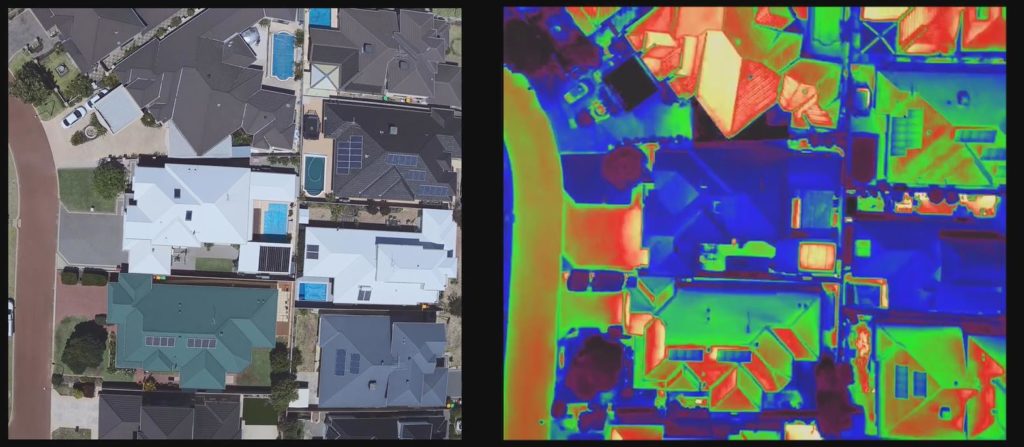Dark coloured roofs are, in general, absorbing more heat energy than light coloured roofs. But how much of this heat travels through your roof into your home?
Have you ever noticed on a hot day how a black asphalt road is a lot hotter than a light coloured concrete footpath? The exact same situation is happening on our home roofs. Dark coloured roofs are, in general, absorbing more heat energy than light coloured roofs.
But how much of this heat travels through your roof into your home? Will a house with a light coloured roof stay cooler and reduce our reliance on air conditioning therefore saving you energy and money?
The roof colour experiment
To answer these questions, we are conducting an innovative experiment. Our research project compares two similar homes, one with a light coloured roof and one with a dark coloured roof. Temperature sensors have been setup throughout each house as well as the roof surface to gather temperature readings. These temperature readings are transmitted in real time to our Cool roofs website.
Thermal imagery
We have gathered drone footage over a typical housing estate in Perth which provides an excellent visual reference showing the temperature difference of a range of coloured roofs. Note the significant difference green vegetation and light coloured roofing and pavement make to temperature compared to the dark roofs, bitumen and pavement.
Watch the full video here.

Sustainable home building
Roof colour is only one aspect you need to consider when building a comfortable, energy efficient and environmentally friendly home. Other aspects that have low cost and high impact are:
- House orientation – maximise energy efficiency by orienting your home with living and entertaining areas to the north and minimal windows on the east and west sides.
- Insulation – one of the most cost efficient technologies for a sustainable home is insulation in walls and ceilings and lining underneath roofing material. Insulation will help keep warmth in during winter and the sun’s radiant heat out during summer.
- Natural ventilation – take advantage of free natural ventilation by locating doors and windows so that prevailing cool breezes are able to enter the home and flush out warm air before exiting on the opposite side.
- Garden and landscaping – clever location of trees, shrubs and other landscape features can improve the thermal performance of your home, create an appealing aesthetic, provide habitat for wildlife as well as having positive mental health impacts.
Visit our sustainable home building page for more information about these and other sustainability aspects to consider when building or renovating your home.
You can download and print this handy sustainable home building checklist to take with you when viewing display homes and land for sale.
